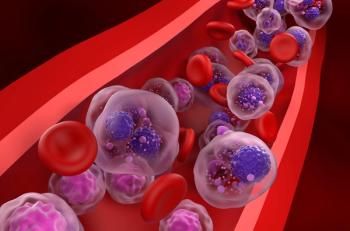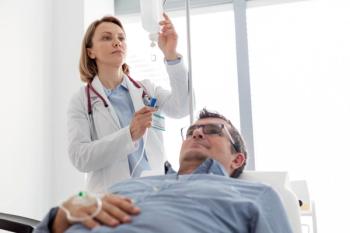Key Takeaways
- The COVID-19 pandemic had a significant impact on the workload, working environment, and patient safety of community pharmacists.
- Many pharmacists reported feeling unsupported by their employers and authorities.
- Pharmacy companies and authorities must provide better support to community pharmacists so that they can manage new responsibilities and growing roles in patient care.
Findings from a survey of community pharmacists’ perceptions of their work environment and patient safety during the COVID-19 pandemic highlight a need for improved communication with management as well as further research into the effects of pharmacists’ work environments on patient safety.
Workloads increased across the health care landscape during the COVID-19 pandemic, necessitating new approaches and more extensive protective measures. Due to suboptimal protection for health care workers when interacting with sick patients, researchers also noted that the psychosocial work environment was affected by the pandemic, resulting in widespread anxiety, distress, and depression.
Although outside of the hospital environment, community pharmacies were not immune to these challenges. Community pharmacists played a crucial role during the pandemic, advising patients, providing immunizations, and taking on new responsibilities in addition to traditional roles. Newer tasks included patient education about the pandemic, stocking different supplies and medications needed during that period, and introducing new logistical procedures like home delivery.
Although crucial to patients and offering new opportunities for pharmacy staff, all of these changes resulted in increased workloads and burnout rates. Investigators have repeatedly demonstrated that community pharmacists had higher rates of burnout than pharmacists in hospitals, whose responsibilities, although stressful, did not have so many changes, according to the survey. Drug shortages and increases in customer behavior also added to the problems for community pharmacists.
In addition to presenting major problems for pharmacy staff, these levels of burnout can also have implications for patient safety. According to the World Health Organization, patient safety is defined as the absence of unnecessary errors and in community pharmacy environments, most of these errors are related to dispensing.
Prior to the pandemic, some studies found associations between higher workloads and self-reported dispensing errors, and pharmacists have reported that a high workload is a major contributor to dispensing errors. However, other studies have found that patient safety is not affected by high workload and poor well-being.
Using both quantitative and qualitative data, investigators conducted a survey of all community pharmacists in Sweden. Data were collected between November 2021 and February 2022. Respondents were asked about their perception of the impact of the pandemic on workload, working environment, and patient safety. Out of the 5281 eligible respondents, 2034 surveys were returned, giving a 41% response rate.
According to the study, 62% of respondents said the workload had increased compared to pre-pandemic levels, while 9% felt it had decreased and 22% felt it was unaffected. An analysis of possible influences, such as education, professional role, and COVID-19 infection, found no major differences.
However, those who had worked fewer than 4 years in the pharmacy and those who were afraid of contracting COVID-19 were more likely to perceive the workload as increased (72%) for both. In contrast, those unafraid of infection were more likely to consider the workload decreased (51%).
The qualitative analysis showed that spring 2020 was very chaotic for community pharmacists, with customers wanting to purchase face masks, hand sanitizers, and disposable gloves. At the same time, new cleaning routines were implemented, although respondents said these were not always followed because pharmacy staff did not have enough time. New services such as curbside pick-up and home delivery were also implemented, and pharmacists reported skipping lunch breaks or helping on days off to keep the pharmacies open.
Even when the number of ill staff members decreased and the flow of customers normalized in the summer months, the pharmacists said their workloads continued to increase. By that point, many companies had reduced the staff in some pharmacies and the number did not increase when customer flow increased again.
Finally, the psychosocial work environment was considered worse by 59% of respondents, whereas 28% believed it was unaffected and only 3% found it improved. The increased workload, high levels of sick leave among staff, and unpredictable customer flows were all considered deeply stressful, and temporary regulations regarding refills and physical distancing added to the challenges.
The respondents also reported challenges when dealing with customers’ annoyance and anger with new rules and increased wait times. Conflicts arose because some patients did not understand the restrictions, either by not staying behind plexiglass barriers or getting angry when asked to leave the pharmacy due to their symptoms.
Many respondents said that they collaborated well with their colleagues during the pandemic, banding together to solve problems. However, some expressed a feeling of disappointment with the larger companies, many of whom canceled bonuses and increased wages due to lower sales.
Despite all of these challenges, the respondents did not believe that patient safety had been influenced by the external factors impacting working conditions. The majority (55%) did not believe patient safety was affected, whereas 24% found it was worse and 8% said it was better.
Comments that specifically mentioned patient safety were related to factors such as low staffing and high workloads. Other circumstances, such as being transferred between pharmacies due to staffing needs and communicating with caretakers rather than patients themselves were also mentioned by respondents.
Based on their findings, the study authors said it was clear that workloads had increased and the working environment, both physical and psychosocial, had deteriorated. However, respondents did not believe that patient safety had been influenced. Instead, they said management did not understand the working conditions, highlighting a need for better communication within pharmacy companies.
Reference
Lindberg M, Sjolander M, Wisell K. Community pharmacists’ experiences during the COVID-19 pandemic in Sweden: A mixed-methods study. Pharmacy (Basel). 2022;10(2):89. doi:10.3390/pharmacy10020089







































































































































































































